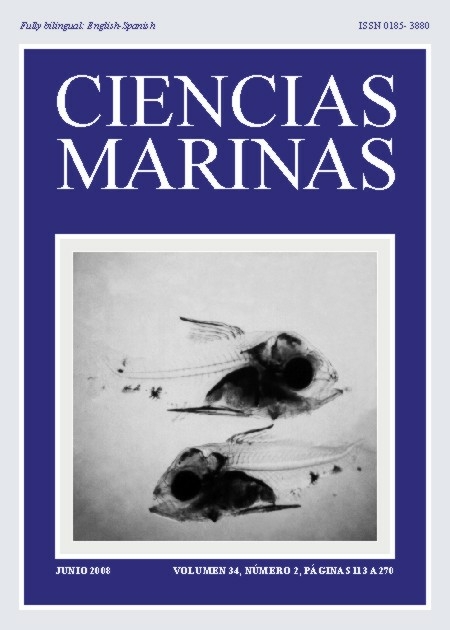Reproductive biology of the sea cucumber Parastichopus parvimensis (Echinodermata: Holothuroidea) at Isla Natividad and Bahía Tortugas, Baja California Sur, Mexico
Main Article Content
Abstract
The reproduction of the sea cucumber Parastichopus parvimensis was studied from April 2000 to August 2001 at Isla Natividad and from March 2003 to March 2004 at Bahía Tortugas, Baja California Sur, Mexico. Samples were collected manually by semi-autonomous diving. The sea cucumber is a dioecious species, without external sexual dimorphism, with ramified gonad. The development of the gonad confirmed five stages: undifferentiated, gametogenesis, ripe, spawning, and postspawning; this indicated annual synchronous reproduction in both study areas. The sex ratio was 1:1. The variation of the gonadosomatic index was directly related to the gonadal development. Maximum maturity and spawning were recorded from February to May at both sites. The weight at first maturity was 140 g at Isla Natividad and 120 g at Bahía Tortugas. In both areas P. parvimensis showed seasonal visceral atrophy from August to October. As a fishery management alternative, we propose one closed season from February to May to protect the reproductive season (ripe/spawning), and another from August to October to protect the period when the internal organs are absent or atrophied.
Downloads
Article Details
This is an open access article distributed under a Creative Commons Attribution 4.0 License, which allows you to share and adapt the work, as long as you give appropriate credit to the original author(s) and the source, provide a link to the Creative Commons license, and indicate if changes were made. Figures, tables and other elements in the article are included in the article’s CC BY 4.0 license, unless otherwise indicated. The journal title is protected by copyrights and not subject to this license. Full license deed can be viewed here.

